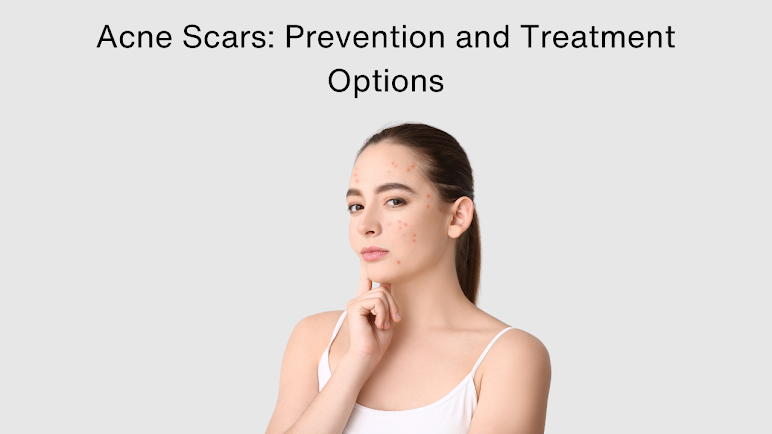Acne Scars: Prevention and Treatment Options

Welcome to the Gleuhr skin and dental clinic in Chandigarh and we provide best skin, hair and dental treatment in tricity and we also sell natural skin and hair products in all over world. We have best skin specialist in Chandigarh who are highly educated and dedicated to their work. https://clinic.gleuhr.com/

Acne, the bane of many individuals' existence, manifests
differently across various stages of life. Whether you're navigating the
tumultuous waters of adolescence or traversing the complexities of adulthood,
acne can persist as a persistent reminder of our skin's delicate balance.
Understanding the nuances between teenage acne and adult acne is crucial for
effective management and treatment.

For many, adolescence heralds the onset of acne, marking a
transitional phase from childhood to adulthood. Teenage acne typically emerges
during puberty, triggered by hormonal fluctuations that stimulate the sebaceous
glands to produce excess oil. This surplus oil, combined with dead skin cells,
forms clogs within hair follicles, leading to the formation of
comedones—commonly known as blackheads and whiteheads.
The forehead, nose, and chin, collectively referred to as
the T-zone, are prime real estate for teenage acne. Hormonal surges,
particularly androgens like testosterone, stimulate sebum production,
exacerbating acne in these areas. Additionally, hormonal changes during
menstruation can aggravate acne in adolescent girls, further complicating the
landscape of teenage skincare.
Psychologically, teenage acne can be debilitating, impacting
self-esteem and confidence during a vulnerable period of self-discovery. Social
interactions may become fraught with anxiety as individuals navigate the often
harsh judgments of peers. Moreover, the lack of experience in skincare routines
and the allure of quick-fix solutions can exacerbate the condition, leading to
potentially harmful practices like aggressive scrubbing or picking at pimples.
Contrary to popular belief, acne doesn't necessarily vanish
with the dawn of adulthood. Adult acne, characterized by persistent breakouts
beyond the teenage years, presents its own set of challenges. While the exact
mechanisms driving adult acne remain elusive, factors such as hormonal
imbalances, stress, genetics, and lifestyle choices contribute to its onset.
Unlike teenage acne, which predominantly affects the T-zone,
adult acne tends to surface in areas rich in sebaceous glands, including the
jawline, cheeks, and chin. Hormonal fluctuations, particularly in women, play a
pivotal role, with conditions such as polycystic ovary syndrome (PCOS)
exacerbating acne by increasing androgen levels.
Moreover, the relentless pace of modern life introduces
stress as a significant culprit behind adult acne. Elevated cortisol levels,
triggered by chronic stress, can stimulate sebum production and inflammation,
paving the way for stubborn breakouts. Lifestyle factors, including diet,
smoking, and skincare habits, also influence the severity of adult acne,
underscoring the importance of holistic approaches to treatment.
Effectively managing acne, whether in adolescence or
adulthood, necessitates a tailored approach that addresses underlying causes
while minimizing potential side effects. In the case of teenage acne, gentle
cleansing routines, incorporating salicylic acid or benzoyl peroxide, can help
unclog pores and reduce inflammation without overly drying the skin.
Additionally, establishing healthy habits like regular exercise and a balanced
diet can mitigate hormonal fluctuations and promote overall well-being.
For adult acne, treatment strategies often involve a
multifaceted approach that targets both hormonal and environmental factors.
Prescription medications such as oral contraceptives, spironolactone, or
isotretinoin may be recommended to regulate hormone levels or reduce sebum
production. Topical treatments containing retinoids or antibiotics can help
unclog pores and combat bacterial overgrowth, while incorporating
stress-reducing activities like mindfulness or yoga can mitigate
cortisol-driven flare-ups.
In severe cases, dermatological procedures like chemical
peels, microdermabrasion, or laser therapy may be employed to address scarring
or stubborn lesions resistant to conventional treatments. However, it's
essential to consult with a qualified dermatologist to determine the most
appropriate course of action based on individual skin type, severity of acne,
and potential contraindications.
Conclusion: Acne, whether encountered in the throes of
adolescence or amidst the complexities of adulthood, serves as a poignant
reminder of the intricate interplay between hormones, genetics, and lifestyle
choices. While teenage acne may be regarded as a rite of passage, adult acne
challenges the notion that clear skin is synonymous with maturity. By adopting
a comprehensive approach that encompasses skincare, dietary modifications,
stress management, and medical interventions when necessary, individuals can
reclaim control over their skin health, embracing confidence and self-assurance
across the lifespan.
Top of Form
Comments
Post a Comment